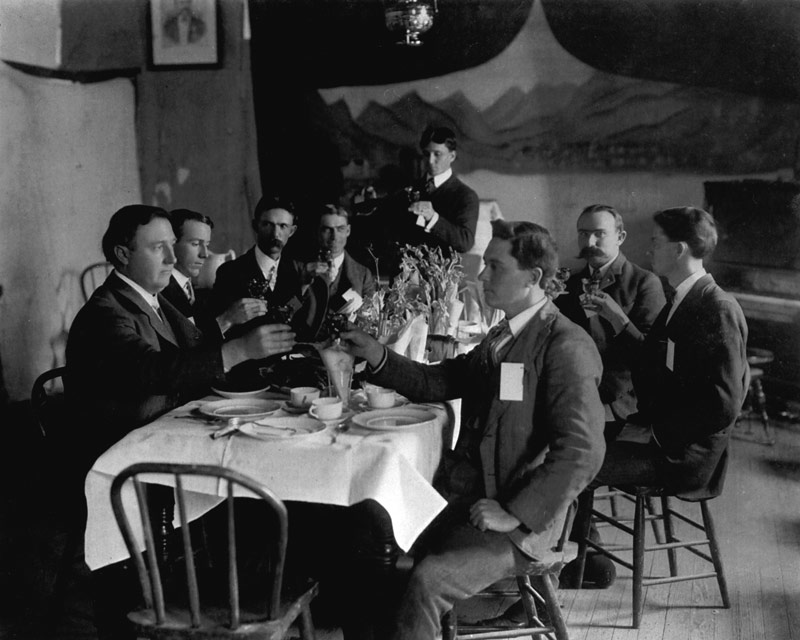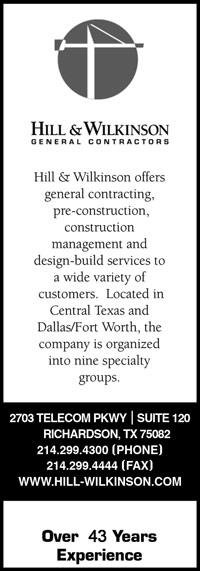This article originally appeared in the Garland/Mesquite section of The Dallas Morning News on July 7,1995.
By Michael R. Hayslip
For the Garland Chamber of Commerce, which marks its 100th anniversary this year, the business at hand was not always just business. As the first group organized for general civic betterment, its membership flourished in the city’s civic, cultural and social core as well.
Originally named the Garland Commercial Club, the chamber traces its birth to 1895, the year the U. S. Patent Office issued its first patent for a gasoline-powered automobile. It was also the founding year of Garland’s first commercial bank, the Citizens’ National, and the locals believed it was high time to spread the good word about Garland.
In his 1912 Silver Anniversary edition, Garland News publisher W. A. Holford, himself an ardent Commercial Club booster, touted the area as “. . .the best country, inhabited by the best people on the American continent.” After a brief suspension of activity during WWI, the club reorganized in 1919, and Holford reported that every business in town had resubscribed its membership, “save one or two,” whose names he disdainfully ignored.
Alternating luncheon and business meetings, the Commercial Club assembled monthly, but usually suspended formal activity for three months of the summer’s heat. Farmers, whose efforts produced the bulk of Garland’s income, were also invited to the meetings, which featured both local and out-of-town speakers on topics of general interest.
While the 19th amendment to the U. S. Constitution gave women the right of universal suffrage in 1920, Commercial Club membership in the early decades was a “men only” affairs. There were, however, efforts to make the group inclusive. Wives of the members provided food and suitable entertainment to augment the speaker presentations, which were subject to immediate newspaper criticism if they proved too lengthy or controversial.
With growing vigor club members tackled city-wide causes. They joined political leaders in 1921 to lobby successfully for rerouting the planned Bankhead Highway (State Highway Number 1) through the middle of the business district. In 1923 they changed the group’s name to Garland Chamber of Commerce, adopted the slogan “where teamwork works” and staged a community fair which attracted over 7,500 visitors to the city of 1,500.
By the late 1930s chamber leaders joined city and local banking officials in hot pursuit of industrial payrolls to stimulate growth and broaden the city’s tax base. Firms such as Craddock Foods, Byer-Rolnick Hat Corporation, Southern Aircraft Corporation and Guiberson Diesel Engine Company provided trophies from that early hunt, and many of their employees wove themselves indelibly into the fiber of the community.
Post-World War II chamber activity, propelled by the employment in 1947 of its first full-time paid executive manager, claimed responsibility for installations by Emsco Derrick, Luscombe Aircraft Company, International Rebuilders, Varo Inc., and Kraft Foods, which occupied the plant originally built by Guiberson. During the l950s the new addresses included spots for Hermetic Seal Transformer, Desoto Paint, Safeway Warehouse, Sherwin-Williams Inc., General Motors Training Center, Oil Well Supply and Globe Union Inc.
The cumulative effect of these corporate locations, combined with the establishment of feeder firms that supported them, was reflected in the Garland’s population, which roughly quadrupled during the decade of the ‘50s.
Concerns with the quality as well as the quantity of local life led to the formation of an adjunct chamber committee which by 1963 had secured land and funding for Memorial Hospital of Garland, now Baylor Garland. Such was the force of business and professional women by the 1970s that they began serving as chamber officials, and to date more than a dozen have filled officer and director chairs as the Garland Chamber of Commerce climbed into its maturity.
The available land space is mostly filled now, and Garland can no longer swap many cotton patches for industrial plants housing developments, but its Chamber of Commerce still faces challenges in helping to facilitate solutions and improve the quality of life in the city. That, after all, has always been the goal of “. . .the best people on the American continent.”

Photo caption:
A group of Garland business and professional men gather (ca. 1905) to salute one of their own on the eve of his wedding. Included are (l-r) John Beaver, Erle Embree, Gus Harris, unidentified, A. R. Davis (standing), Joe Harris, Walter Jones and Joe Pendergast. The groom’s vacant chair was for G. L. Davis, who served in the early ‘20s as president of the Garland Commercial Club, predecessor of the Garland Chamber of Commerce.

